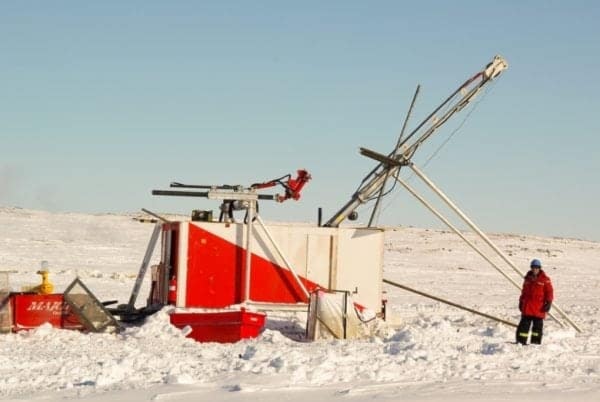Construction could begin on the Back River gold mine by next summer if the federal government approves the project, which now has the Nunavut Impact Review Board's backing.
The review board issued its endorsement of Vancouver-based Sabina Gold & Silver Corp's project on July 18 in a 400-page document that contains 94 conditions.
The caveats relate to water and wildlife monitoring and forcing the formation of committees dealing with the environment, Inuit traditional knowledge, caribou and socio-economics.
NIRB originally rejected Back River in June 2016 on the grounds that it could have detrimental effects on wildlife, caribou herds in particular. In January, Carolyn Bennett, the minister of Indigenous and Northern Affairs Canada, sent the report back to NIRB indicating that it required further study. Another intensive round of written responses from Sabina and additional public hearings ensued.
With the Nunavut regulatory board's subsequent approval last week, the fate of Back River now rests with Bennett.
Phillip Kadlun, NIRB's panel chairperson, stressed that this wasn't simply an exercise in bureaucracy.
"For those who may have expressed concern that the board’s further consideration of the project would be a 'rubber stamp' only and would not lead to any substantive improvements to the project, the board notes that the further consideration was conducted with the same care and thoroughness as the original assessment," Kadlun wrote in a letter accompanying the revised Back River report.
"The board notes that Sabina’s revised plans now constitute some of the most protective caribou protection measures ever developed for the Arctic and a thorough monitoring program of the project's effects on wildlife."
At the last round of public hearings in Cambridge Bay in early June, Matthew Pickard, Sabina's vice-president of environment and sustainability, said his company has committed to nine types of caribou monitoring including satellite collar data, over-the-horizon monitoring, incidental observation and going out in vehicles and aircraft to watch for caribou. If the animals – designated as a 'threatened species' – get too close, Sabina said it will temporarily shut down the mine – a condition included in NIRB's latest report.
KIA 'satisfied'
The Kitikmeot Inuit Association helped create the wildlife mitigation and monitoring plan that Sabina will follow. The plan is "more robust than any other development project" on the tundra, said Geoff Clark, the KIA's director of lands, environment and resources.
"We're satisfied with the outcome," Clark said.
Further KIA support for the project could be forthcoming with the future signing of agreements with Sabina pertaining to employment targets, contracting, land tenure, water compensation and other economic benefits, Clark added.
Bruce McLeod, Sabina's president and CEO, noted that his company will now seek water licences required for the project.
"We are moving ever closer to our goal of becoming a mid-tier gold producer in one of the world’s best mining jurisdictions," McLeod stated. "Back River is aiming to be one of the next gold mines in Nunavut providing much desired jobs, training, infrastructure and opportunities to the Inuit of the Kitikmeot Region."
The mine will initially entail open pit but will also involve underground extraction of gold. Construction won't begin in earnest until next summer because the water licence will not be valid any sooner and supplies will need to be transported to the project site during the 2018 sealift season, Pickard said.
Arsenic trioxide not a factor
Thoughts of the Giant Mine remediation in Yellowknife – expected to exceed $900 million and requiring monitoring of deadly arsenic trioxide stored underground possibly forever – should not be associated with Sabina's proposed Back River gold project, a company official said.
At the Back River hearings in Cambridge Bay in early June, Wes Carson, Sabina's vice-president of project development, attempted to allay such fears. Although both are gold deposits, Back River will not produce highly toxic arsenic trioxide like Giant Mine did, Carson said.
Giant Mine had a roaster on site that heated the gold-bearing rock to extreme temperatures, creating arsenic trioxide dust in the process, according to Carson.
"We don't need to do that with our rock at all," he said during the hearings. "It's a completely different process. So that's why we won't have those same problems."
Regardless, Sabina will post a bond, or cleanup deposit, with the federal government that will be in the "tens of millions to make sure that the money will be there to clean up the mine no matter what happens, and we'll prepare for that, and we'll give that before we even start to put a shovel in the ground. We have to," said Matthew Pickard, Sabina's vice-president of environment and sustainability, at the hearings.
